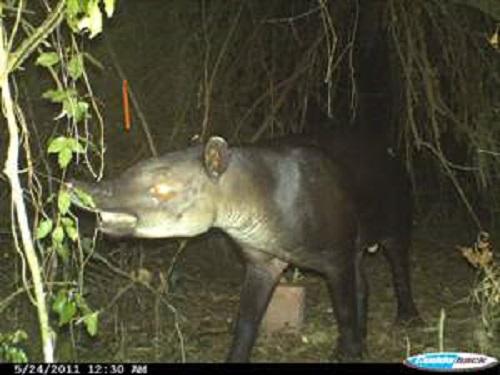Rafael Reyna-Hurtado
The aim of the project is to study how four endangered native mammal species have adapted to periods of food and water scarcity in a semi-dry tropical forest where water and food are seasonally limited in Southern Mexico

The latest climatic models predict that tropical forest of Southern Mexico will become drier as climate change intensifies. What will be the effect of these changes on the population of species that depend on waterholes or on critical watery food species to their survival?

This project aim is to monitor the behaviour and population status of four highly endangered species and the critical resources they depend during the dry season. The four species are: the Baird’s Tapir (Tapirus bairdii), the white-lipped peccary (Tayassu pecari), the black howler monkey (Alouatta pigra) and the spider monkey (Ateles geoffroyi). By describing ecological adaptations of these species during the dry seasons through a long-term monitoring plan that includes comparison through years, we will be better positioned to elaborate conservation plans for these endangered species.
These conservation plans will include the ecological requirements they need to survive. Such requirements could be the differential use of habitats, food species, or changes in behaviour, or movement patterns. We may find that in addition to hunting pressure, and habitat loss and fragmentation (factors that have already been established as having a negative impact on the populations), climate change will affect negatively the long-term survival probability of the species in the region by intensifying the dry seasons. We want to provide information on this latter aspect to have integral conservation plans for the species in the area.